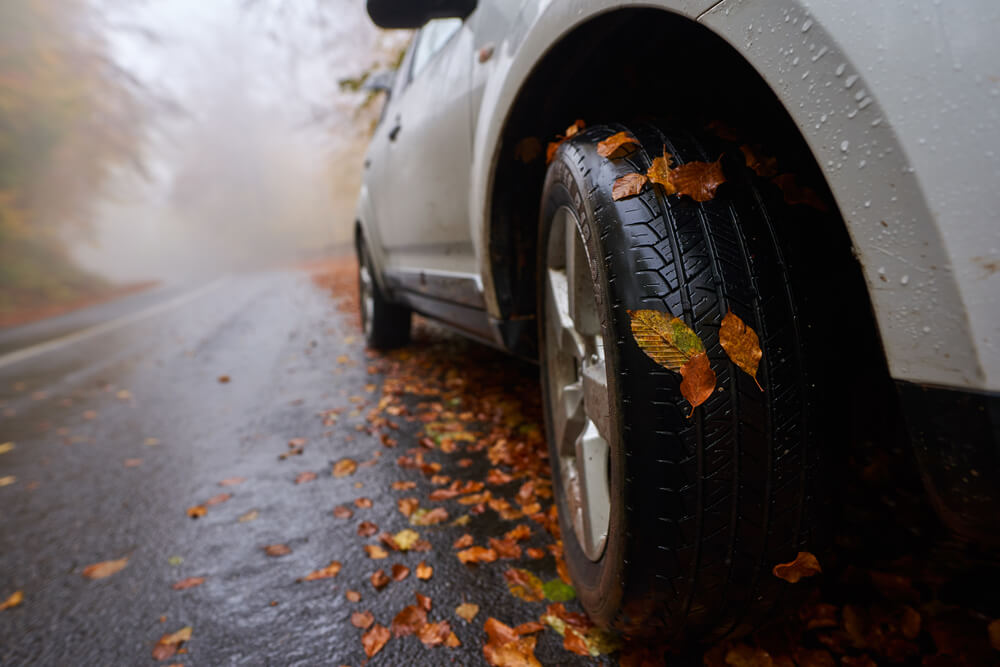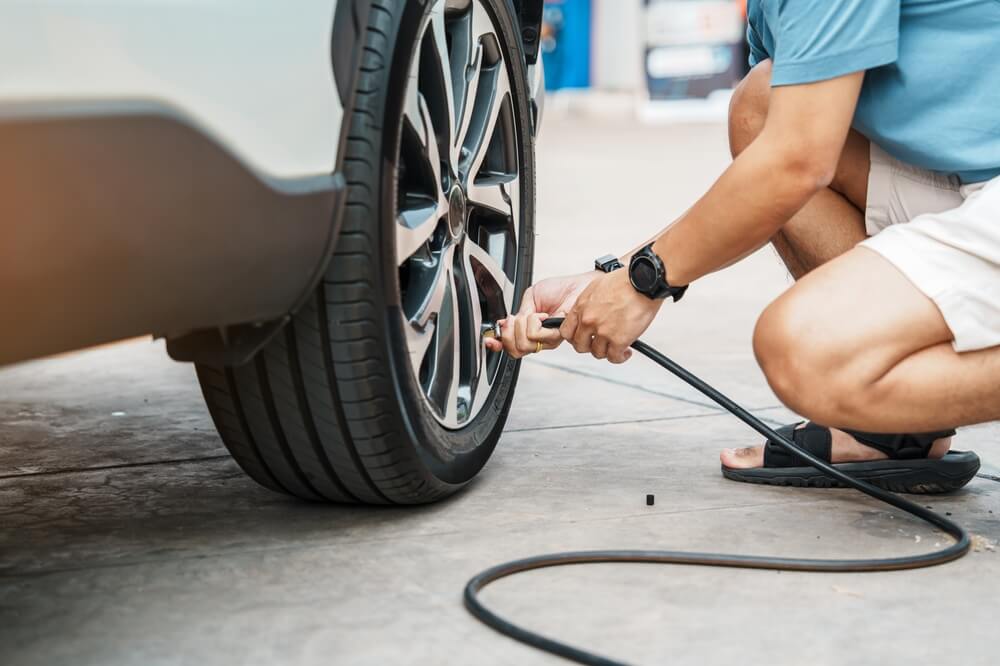Fall Driving Hazards: How to Stay Safe on Wet, Leaf-Covered Roads

What if your entire life was ruined in a single moment?
That happens to far too many drivers during the fall season. Even though they have good car insurance, some of these drivers find themselves unprepared for some of the seasonal driving hazards that await them on the open road.
That does not mean, though, you should spend the entire season cooped up inside your home. Want to keep yourself and others safe throughout the season, all while enjoying lovely weather and even lovelier views? Keep reading to discover the definitive guide on fall driving hazards and how to avoid them.
Fall Driving Hazards and How They Impact Road Safety
One of the reasons so many drivers become the victim of fall driving hazards is that they do not realize how dangerous the season can really be. This is the time of year they mostly associate with back-to-school sales and changing leaves, so the last thing they expect to encounter is unexpected danger when they are behind the wheel.
Sadly, that danger is ever-present and can be potentially lethal to those who do not understand things like leaf-covered road safety. And fall road safety tips are particularly important for newer drivers who do not know the effect that the seasonal weather will have on vehicle performance and handling.
Understanding How Wet, Leaf-Covered Roads Increase the Risk of Accidents
Driving in fall weather is especially dangerous because wet leaves may cover the road, and this reduces traction for your tires. Clusters of wet leaves can also make it hard to maneuver and greatly increase your chances of skidding, and those same leaves can greatly reduce the visibility of signs and other important traffic markings. All of this increases the risk of accidents, which is why you need to observe proper leaf-covered roads safety tips (like driving slower and being more cautious behind the wheel) all season long.
The Effect of Fall Weather on Vehicle Performance and Handling
Wet weather driving is always difficult, and it can create some unique fall driving hazards. In addition to the increased risk of skidding and poor maneuverability caused by leaves, fog and frost can obscure visibility, further increasing your risks. Additionally, the sun rises later and sets earlier, so you may need sunglasses during the day and may need to turn your lights on earlier at dusk to maximize visibility (both for yourself and others).
How to Stay Safe on Wet Roads During Fall
Driving in fall weather can be difficult for all of the above reasons and more. Fortunately, there are multiple ways you can keep safe no matter how rainy the weather. By learning these tips and teaching them to others, you can help protect yourself and everyone you care about.
What are the most helpful tips for safe driving in rainy weather? While there are multiple precautions you can take during seasonal driving, your best bet is to reduce your speed and increase your following distance. Additionally, the best wet roads driving tip is learning how to avoid hydroplaning.
Reducing Speed and Increasing Following Distance
Chances are you are accustomed to driving at — or maybe a bit above — the speed limit. However, to avoid seasonal driving hazards, you should reduce your speed, which gives you more time to react to unexpected dangers. You should increase your following distance for the same reason: More reaction time means fewer accidents, so you will hopefully avoid having to use car insurance in the fall.
How to Avoid Hydroplaning on Wet Roads
Lowering your speed is one of the best wet roads driving tips because this also reduces your chances of hydroplaning. Making sure your tires are properly inflated can further reduce your risk. Should you end up hydroplaning (always a risk during wet weather driving), avoid braking. Instead, steer into your intended direction and release your foot from the gas pedal. This will keep you safe and ensure a safe commute to the airport or holiday party during the season, regardless of the weather.
Checking Your Tires: Why Tread Depth Matters More in the Fall
An often overlooked wet roads driving tip is to check and maintain your tire tread before you leave the house. Tires that are worn down are far more likely to hydroplane. Ideally, you should inspect (or have a professional inspect) your tires before the season begins to see if any of them need to be replaced. And those in cold-weather states should consider getting winter tires.

Navigating Leaf-Covered Roads: Tips for Safe Driving
Rain is arguably the primary fall driving hazard. But falling leaves greatly increase the risk of seasonal travel. And most drivers are unaware of the risk because they focus on the colorful leaves on the trees rather than the dead leaves on the road.
Unfortunately, those fallen leaves make autumn driving safety more difficult when you are behind the wheel. But the tips below can reduce your seasonal danger and keep you safe this season, no matter the weather.
Why Leaf-Covered Roads Are Slippery and Dangerous
As mentioned before, leaf-covered roads are especially dangerous because the leaves reduce your maneuverability and increase the chances of your vehicle skidding. Those same wet leaves may also cling to road signs and traffic markers, reducing visibility and keeping you from seeing them until it is too late.
How to Safely Drive on Roads Covered with Wet Leaves
Fallen leaves make safe driving in rainy weather difficult, but not impossible. Some of the aforementioned tips will keep you safer when traveling over leaves, including reducing your speed and increasing your following distance. Additionally, you can stay even safer by removing any leaves from your car or windshield before leaving.
Avoiding Hidden Hazards: Puddles, Potholes, and Debris
The rainy weather of fall can turn everyday threats into especially dangerous seasonal driving hazards. For example, puddles, potholes, and debris may be covered by fallen leaves. And if there are any signs warning people about the threat, they may not be visible if they are covered by leaves. As usual, your best option is to drive defensively: Lower your speed, avoid clusters of leaves when possible, and be hyper-vigilant of potential threats.
Fall Weather and Its Impact on Car Insurance
With any luck, these fall road safety tips will keep you safe. But there is always a chance you will get into an accident and have to file a claim. Before that happens, it is important to understand how car insurance in fall is different from other seasons.
First and foremost, the risk factors outlined above, including rainy weather, wet leaves, and an increased chance of car accidents, make it far more likely that you will have to file a claim than in summer or spring. Additionally, the increased presence of animals such as deer underscores the importance of comprehensive coverage.
How Seasonal Weather Affects Your Auto Insurance Coverage
Not everyone on the road will be abiding by the aforementioned fall road safety tips. Therefore, the primary way this season affects your existing coverage is that it increases your chances of getting into an accident and having to file a claim. If you only have liability, this would be the perfect time to add collision and comprehensive coverage.
Ensuring You Have Comprehensive Coverage for Fall Hazards
With automobile insurance, liability is designed to pay for any damage that you cause, and collision is designed to pay for your repairs when you are involved in an automobile accident. However, neither coverage pays out if you collide with an animal, which is a frequently asked car insurance question.
To protect against this threat (remember, there are many more deer on the road in the fall), you will need to add comprehensive coverage. If you have liability, collision, and comprehensive, you will have what is known as full coverage.
How InsureOne Can Help You Stay Safe and Covered During Fall
Now you know some of the scariest fall driving hazards and how to avoid them. You also know some of the tips that can ensure autumn driving safety for you and your family. But do you know who is devoted to protecting all of you during this and every other season?
At InsureOne, we specialize in protecting drivers just like yourself. When you are ready to give your family the protection it deserves in fall and beyond, come get a quote online. You can also pick up the phone and give us a quick call at 800-836-2240. Finally, you are always welcome to see us in person by finding an InsureOne office near you.
FAQs about Fall Driving Hazards
What Should I Do If I Get into an Accident Caused by Fall Weather Conditions?
Make sure that you and your passengers are safe, and turn on your hazard lights to alert other drivers to your vehicle’s condition. If another vehicle was involved, make sure the other driver is safe, and both of you should exchange insurance information. Finally, contact local law enforcement for further advice.
How Does Fall’s Early Darkness Affect Driving Conditions?
Early darkness in the fall reduces visibility on the road and may cause unwanted glare earlier in the day. Drive slowly and cautiously to reduce the chances of a collision with animals or other cars.
Should I Use Cruise Control in Wet or Slick Conditions?
You should avoid using cruise control in wet or slick conditions because this feature increases your chance of hydroplaning. Those chances are further increased by the wet leaves that may be on the ground.



